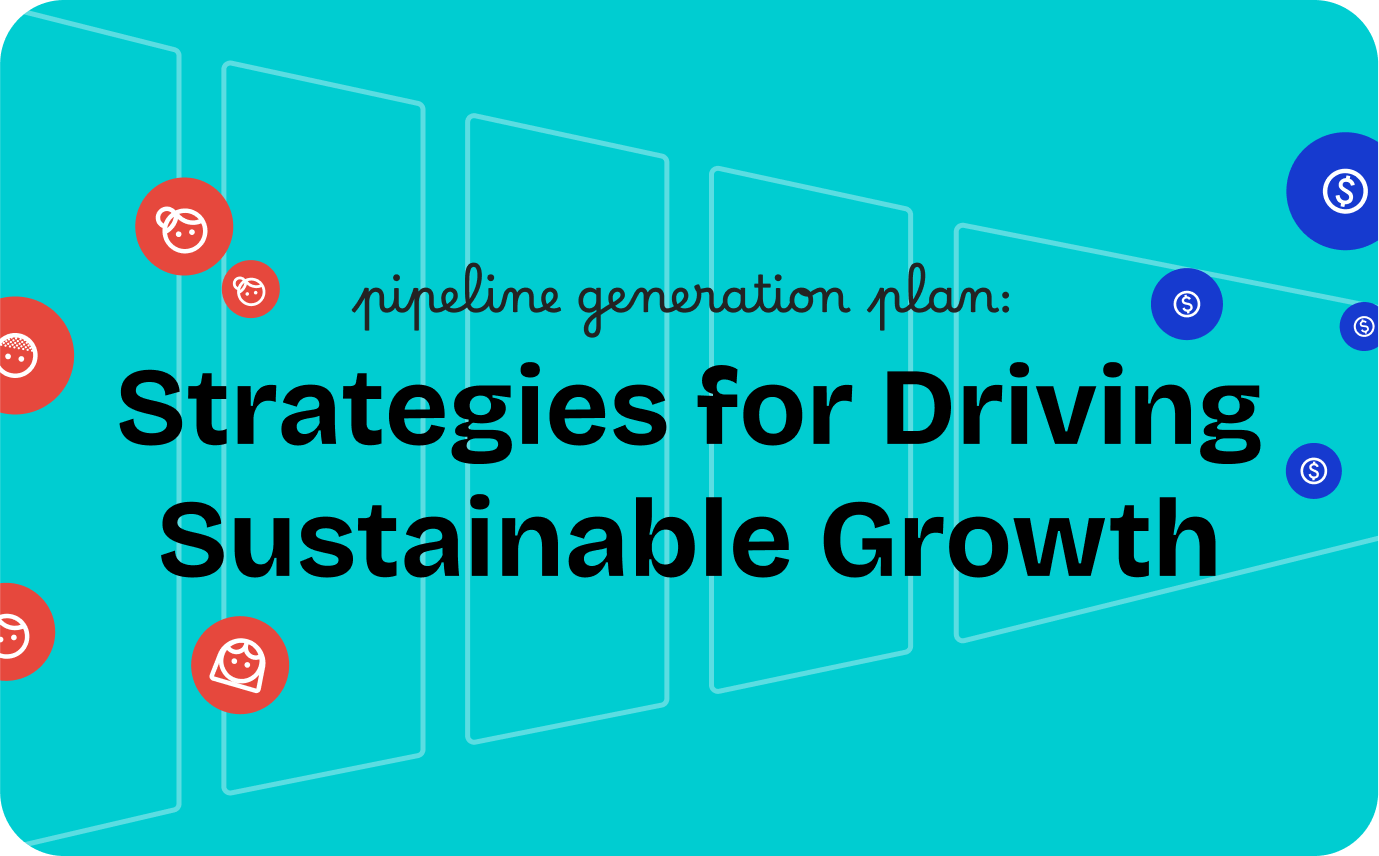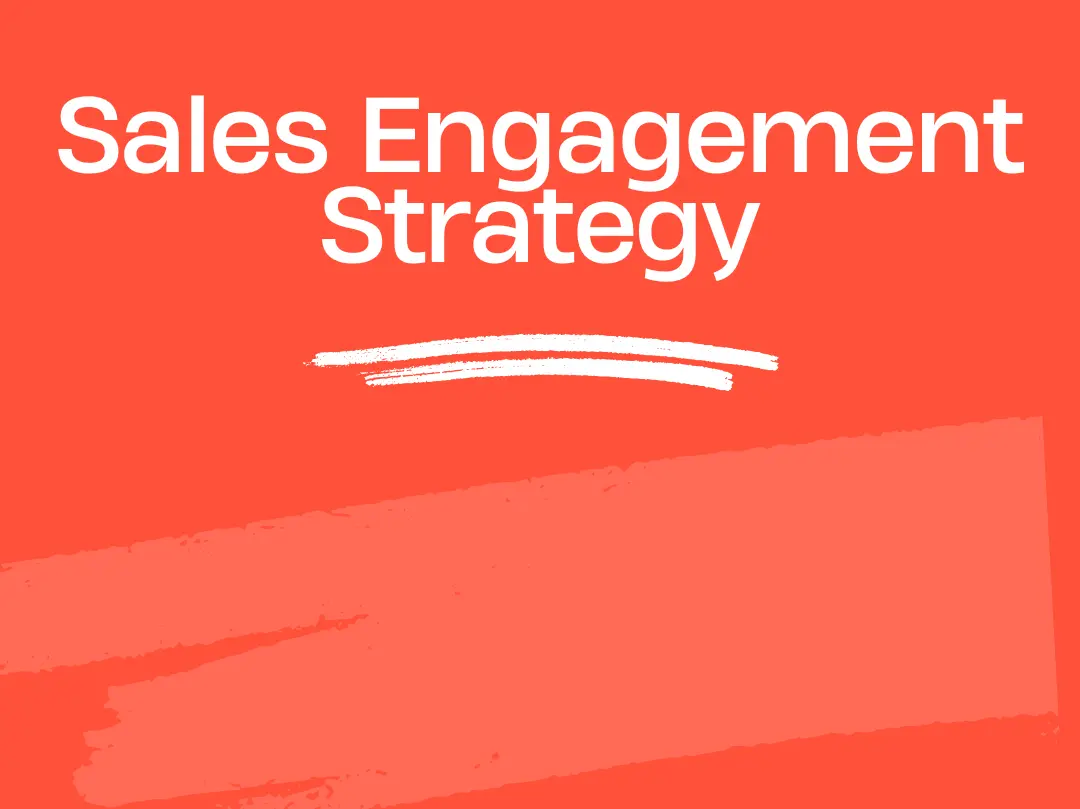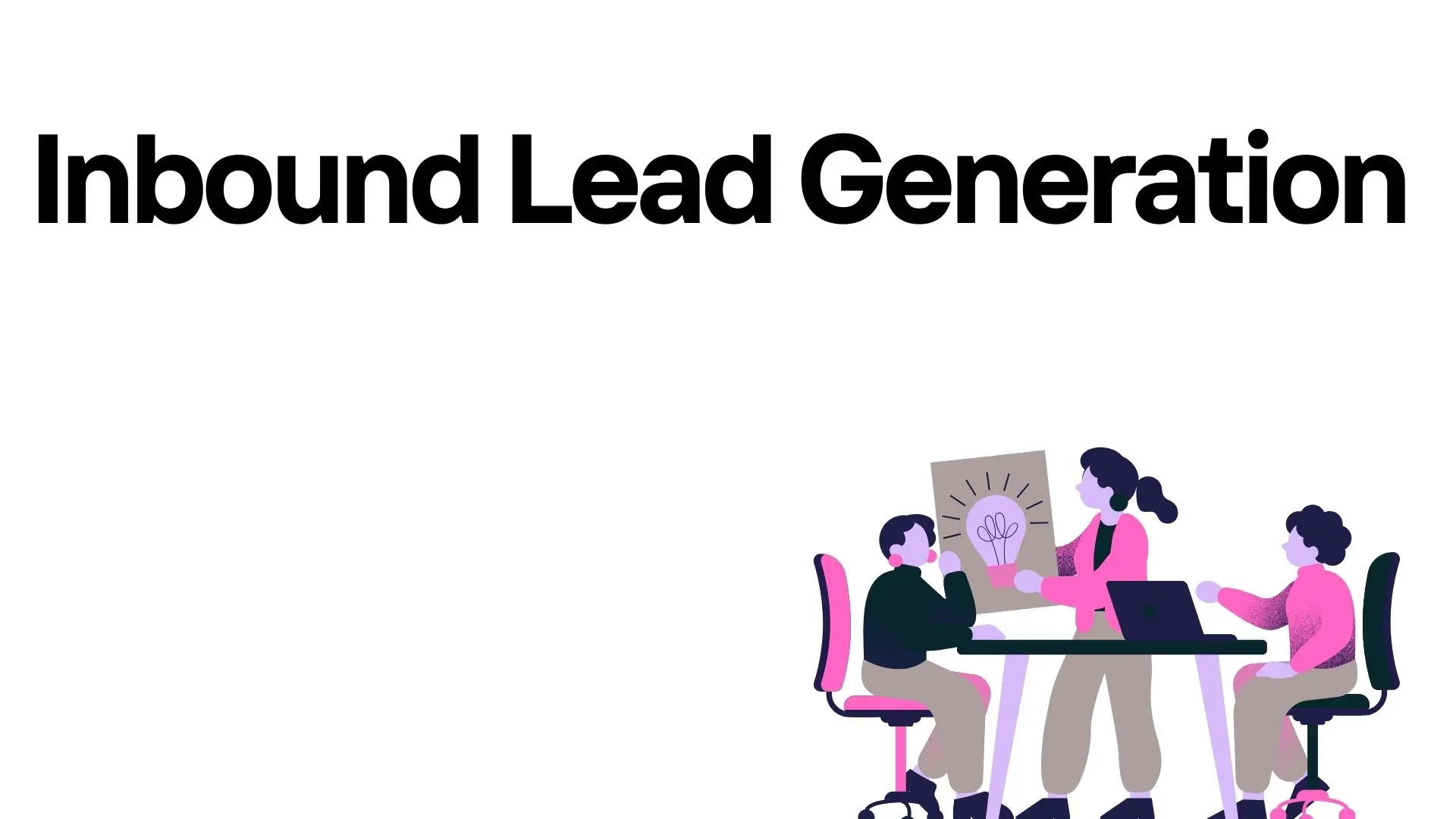Having a solid pipeline generation plan is essential for driving sustainable growth and keeping opportunities flowing.
In this article, we’ll dive into key strategies to boost pipeline creation, sharing practical tips to help you achieve long-term success in sales and business development.
What is a Pipeline Generation Plan?
A pipeline generation plan is basically a roadmap for finding, nurturing, and turning leads into customers.
The goal? To keep a steady flow of qualified opportunities that can turn into sales.
Creating a solid pipeline plan means knowing your audience, understanding their needs and challenges, and figuring out how to connect with them at every stage of their buying journey.
It also involves regularly checking in and tweaking the plan to make sure it’s working and driving consistent growth.
Why You Should Use a Pipeline Generation Plan?
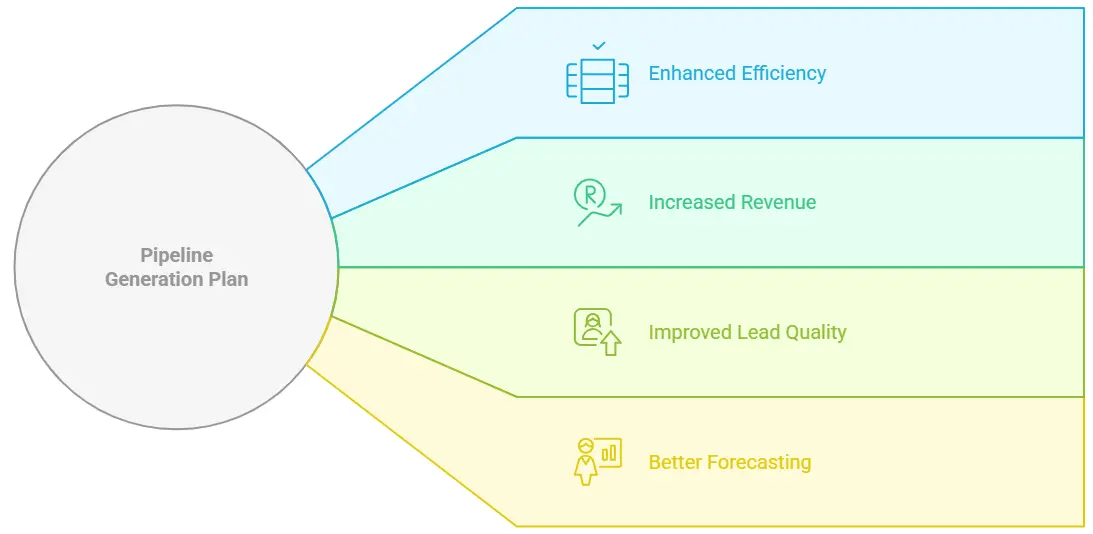
A well-structured pipeline generation plan isn’t just nice to have; it’s a total game-changer for your business.
Let’s break down why it’s so crucial:
Keep the Leads Coming
Pipeline generation in sales is all about keeping a steady flow of qualified leads and opportunities.
Without that consistency, it’s hard to maintain momentum and hit your targets.
But with a solid plan, forecasting becomes way more accurate, and you can strategize your moves confidently.
It’s the difference between guessing your next step and knowing it.
Boosting Efficiency and Results
A clear process keeps everyone on the same page, making it easier to focus, prioritize key actions, and cut out wasted effort.
Plus, when your pipeline is well-organized, you can quickly spot bottlenecks and gaps in your sales flow.
This means you can adjust on the fly, fix issues fast, and keep things running smoothly.
Higher Conversion Rates
Your pipeline doesn’t just bring in leads—it helps you meet potential customers exactly where they are in their buying journey.
By engaging with them thoughtfully, building trust, and offering real solutions, you pave the way for stronger relationships and more closed deals.
That focus on alignment makes conversion rates soar.
Understanding Customer Needs
Great pipeline generation ideas start with knowing your audience inside and out.
When you really get their challenges and needs, you can craft outreach that feels laser-focused and relevant.
This kind of personalized strategy pulls prospects in and makes them feel like you’re the perfect fit for solving their problems.
Fueling Sustainable Growth
The best part of a strong pipeline generation plan? It sets the foundation for sustainable growth.
With a continuous stream of qualified leads, your business can scale without chaos.
It ensures you’re not only winning new customers but also hanging onto the ones you already have, all while staying prepared for the future.
How to Create a Pipeline Generation Plan
.webp)
Building a solid pipeline generation plan doesn’t have to be complicated, but it does require strategy and consistent effort.
A strong plan ensures that qualified leads keep coming in, driving growth and success for your business.
Here’s how to create a pipeline generation plan that works:
Define Your Ideal Customer Profile (ICP)
A successful pipeline starts with understanding your audience. Identify the key traits of your ideal customer.
Who are they? What challenges are they facing, and how does your product or service solve those problems? Go beyond basic demographics—dig into their pain points, values, and behaviors.
Creating a detailed ICP not only helps you target the right leads but also ensures that your messaging resonates deeply with them.
Set Clear Goals and Objectives
Decide what you want to achieve with your pipeline generation plan.
Is your goal to bring in more leads, improve conversion rates, or break into new markets? Be specific and measurable.
For example, instead of aiming to "increase leads," set a goal to "generate 50 qualified leads per month" or "reduce the sales cycle by 20%." Clear objectives keep your team focused and create benchmarks for tracking progress.
Do Your Market Research
Market research is crucial for understanding your competition and spotting opportunities.
Study your competitors’ strategies to see what’s working for them, and identify gaps in the market that you can fill.
Look at industry trends, customer behaviors, and emerging technologies.
This research not only helps you position your offerings effectively but also uncovers untapped opportunities to innovate and attract more leads.
Create Focused Messaging
Craft messaging that directly speaks to your ideal customers at every stage of their buyer’s journey.
Whether they’re just becoming aware of their problem or ready to make a decision, your message should connect with their needs and emotions.
Address their pain points, highlight your unique value proposition, and show how your solution makes their lives better.
Personalization can go a long way in capturing attention and building trust.
Pick the Best Channels
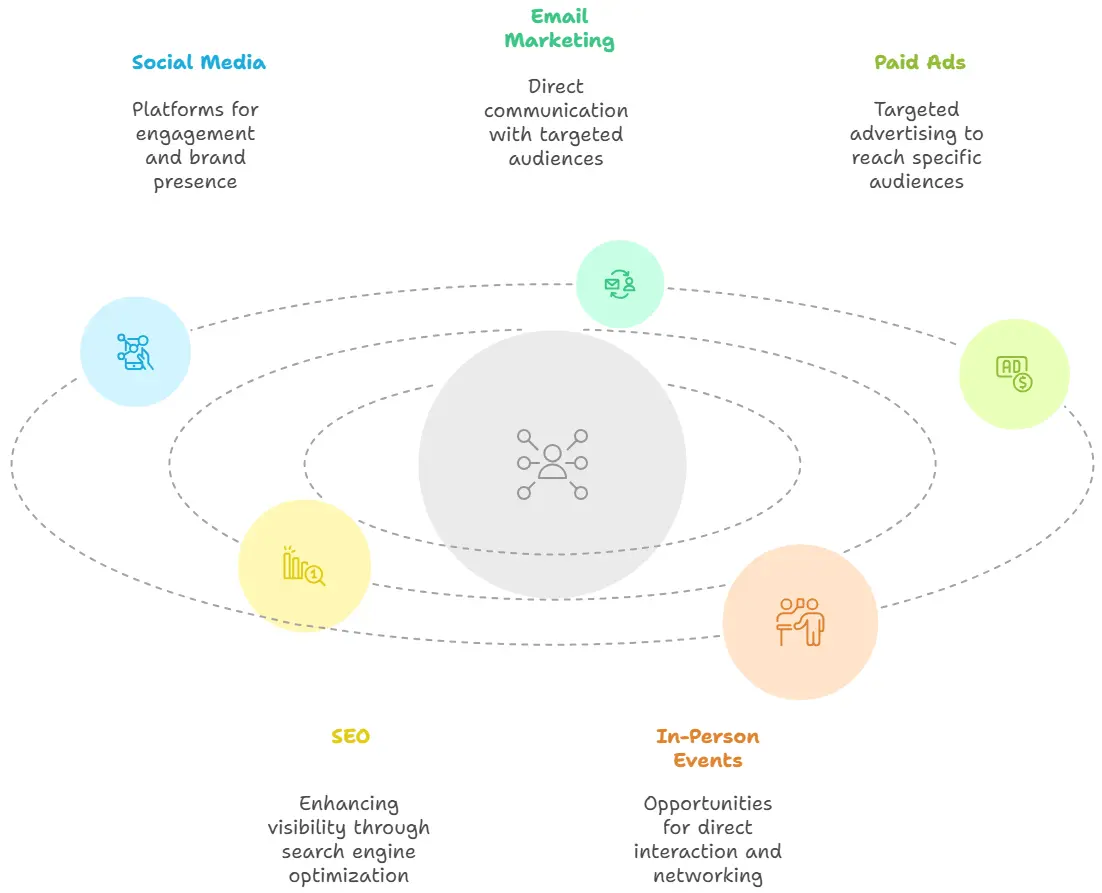
Don’t try to be everywhere at once—focus on the channels that align best with your audience.
Think about where your ideal customers spend their time online and how they prefer to engage with content.
For instance, if your audience is highly active on LinkedIn, focus on creating informative posts and targeted ads on that platform.
If they respond well to email marketing, invest in crafting compelling email campaigns.
Experiment with a mix of channels, including social media, email, paid ads, SEO, and even in-person events like trade shows or networking meetups.
Over time, double down on the channels that consistently drive quality leads.
Set Up a Lead Scoring System
Not all leads are created equal, and that’s where a lead scoring system comes in.
Assign scores to prospects based on their actions (like signing up for a webinar or downloading an eBook) and traits (such as company size or industry).
A robust lead scoring system allows your sales team to prioritize the most promising leads, enabling them to close deals faster and focus their energy where it matters most.
Build and Improve Your Content Strategy
Your content strategy is the backbone of pipeline generation activities, helping to attract, engage, and nurture leads.
Create high-quality, valuable content that addresses your target audience’s needs and challenges.
This could include blog posts, case studies, whitepapers, videos, webinars, and social media content.
Don’t forget about optimizing for SEO to ensure your content reaches the right audience.
Consistently review what content performs best and refine your strategy to maximize results.
Monitor and Measure Results
A great plan needs constant evaluation. Use analytics tools to track your pipeline performance and understand what’s working.
Key metrics to monitor include lead volume, conversion rates, customer acquisition cost (CAC), and sales cycle length.
Regularly review these metrics and use the insights to tweak your strategies, ensuring continuous improvement.
Don’t be afraid to pivot if certain tactics aren’t delivering the desired results.
Bring Sales and Marketing Teams Together
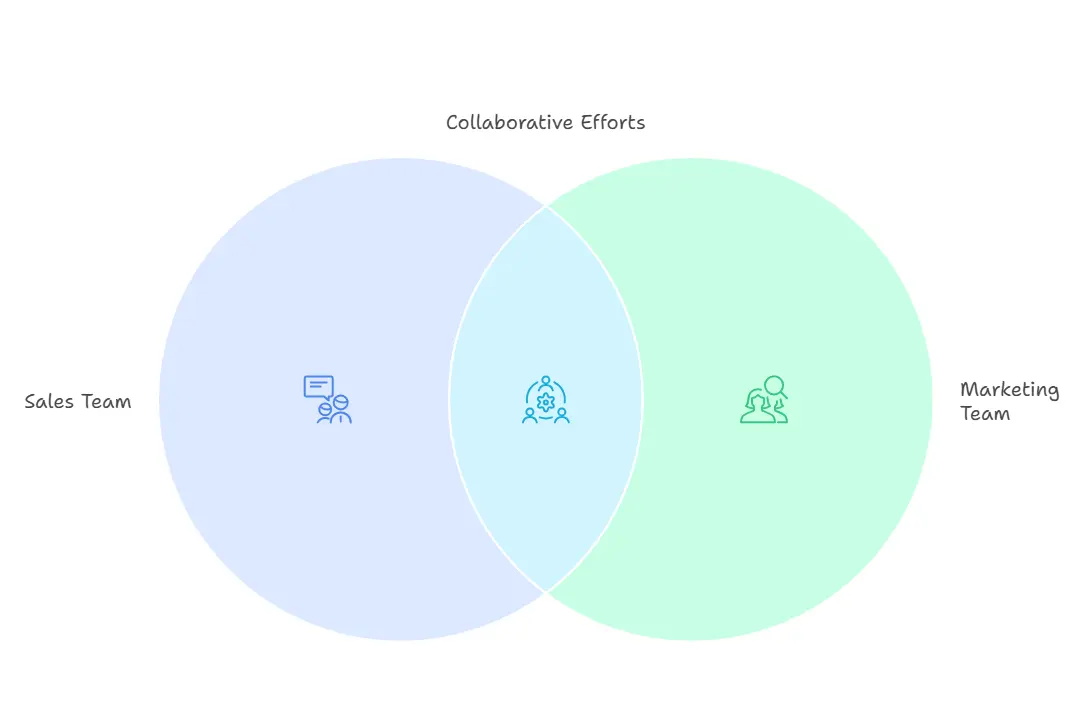
A siloed approach can slow down pipeline growth. Bring your sales and marketing teams together to collaborate closely.
Marketing should provide data-driven insights to guide campaigns, while sales can share real-world feedback from customer conversations.
By aligning their efforts, these teams can create stronger messaging, target the right prospects, and ultimately boost pipeline generation.
Encourage regular meetings and shared goals to foster better communication and alignment.
Adjust and Improve Over Time
Pipeline generation isn’t a one-and-done process. It requires ongoing adjustments to stay effective in a rapidly changing market.
Continuously analyze your data, collect feedback from your teams and customers, and fine-tune your plan.
Stay agile and adapt to new trends, technologies, and customer preferences to ensure your pipeline remains a powerful driver of growth.
| Aspect | Pipeline Generation Plan | Traditional Lead Generation |
|---|---|---|
| Approach | Focuses on creating a structured flow of prospects at each stage of the sales funnel. | Relies on general outreach and one-off campaigns to identify leads. |
| Targeting | Data-driven targeting of specific audiences with personalized strategies. | Broad targeting with less emphasis on personalization. |
| Tools Used | CRM systems, analytics tools, and automation platforms. | Cold calling, email blasts, and networking events. |
| Scalability | Highly scalable due to systematic processes and technology support. | Limited scalability as it relies more on manual effort. |
| Timeframe | Long-term strategy focusing on consistent lead nurturing. | Short-term with immediate but often less sustainable results. |
| Metrics | Measures success through conversion rates, pipeline velocity, and customer lifetime value. | Primarily measures success by the number of leads generated. |
Using Yess to Supercharge Your Pipeline Generation
Yess is a pipeline collaboration platform that helps sales teams win deals together.
Here's how it works:
Map Your Best Path to Win - Yess shows who in your company has the strongest connection to each prospect through past work, mutual connections, or expertise.
No more guessing who can help with that meeting.
Get Executive Help Easily - When cold outreach fails, Yess lets you involve executives or experts.
You write the message, they approve it with one click. No awkward asks or long waits.
Run Multi-Person Outreach - Instead of one rep working solo, Yess coordinates outreach across your team.
Your technical expert talks to their technical buyer, your CEO connects with theirs, and deals close faster.
Make Pipeline Generation a Team Effort - Stop trying to hit quota alone.
Yess turns pipeline generation into a team sport, leveraging your company’s network and expertise to open doors and close deals.
Yess connects with tools like Outreach or SalesLoft, adding a collaboration layer to break into tough accounts.
No more spray-and-pray—just smart, coordinated outreach that gets results.
The Power of Multi-Touchpoint Engagement
Building a strong pipeline generation strategy is all about creating meaningful connections with prospects through multiple touchpoints.
Engaging across channels like email, social media, phone calls, and even in-person events helps you deliver a consistent and dynamic experience that builds trust and interest.
By staying active on these touchpoints, you keep your messaging clear and show your value at every step of the sales funnel.
This not only builds stronger relationships but also increases your chances of conversions by keeping your brand top of your mind.

